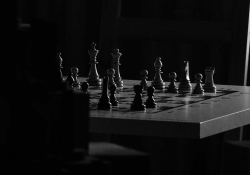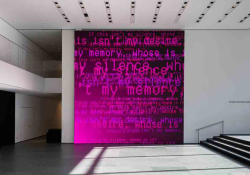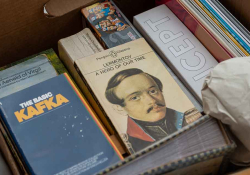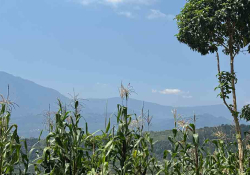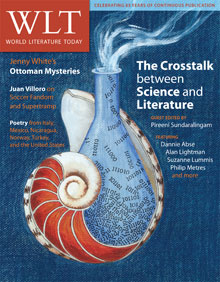Written on Earth and Water: Poetry and Ecology in Nicaragua
In a ceremony on February 27, 2010, presided over by Nicaraguan president Daniel Ortega and his wife, Rosario Murillo, who is the Coordinator of the Council On Communication and Citizenship for Development and Social Well-being, the government of Nicaragua officially adopted a “Charter of the Rights of Mother Earth” and began the process of incorporating it into the country’s political constitution. Also attending this historic event were Nicaraguan Miguel d’Escoto (president of the UN General Assembly in 2008–09) and Brazilian Leonardo Boff (former professor of ethics at Rio de Janeiro University), the co-authors of the “Universal Declaration on the Common Good of the Earth and Humanity,” a visionary manifesto that formed the basis of Nicaragua’s charter and will no doubt shape the debate on global public environmental policy in the coming years. Article 1 from this document states: “The Common Good of Mother Earth and Humanity is strengthened when all beings are viewed as interconnected and as having intrinsic value, regardless of their worth to human beings.” The poetry by preeminent authors from Nicaragua—a country of seven million inhabitants and enormous biodiversity known as the “Republic of Poets”—is an excellent place to find these interconnections and open a dialogue with global literature engaged with ecological issues. World-class Nicaraguan writers such as Rubén Darío (1867–1916), whose work renovated the musical possibilities of the Spanish language and forged Hispanic America’s cultural independence from Spain, as well as Ernesto Cardenal (b. 1925), whose poetry has been translated into many languages, offer important insights into how we can live more responsibly in the world. The work by these and the other Nicaraguan poets included in this overview also serves to break the parochial barriers of the United States and literary parameters defined by the English language. Monolingualism on the part of academics who do research in ecocriticism, the relatively new field that examines the relationship between literature and the physical environment, could be considered another unfortunate version of the uniformity without alternatives that Vandana Shiva has defined as “monocultures of the mind” (Shiva 7). As a citizen of the world, Darío could very well be a precursor of “eco-cosmopolitanism,” a term coined by Ursula K. Heise in Sense of Place and Sense of Planet.
In The Future of Environmental Criticism: Environmental Crisis and Literary Imagination, Lawrence Buell distinguishes between the concept of “space,” which is abstract in geographical terms and “place,” a center of values and shared meanings where people can establish identities and alliances (Buell 63). Our ties with places, says Buell, also have a temporal dimension since they reflect accumulated experience. Rubén Darío creates a powerful memory-place of his native country in “Far Away”:
Ox whose steaming clouds of breath I saw as a boy
beneath the Nicaraguan sun, golden, aflame,
on a fertile hacienda of harmonious joy
in the tropics. Dove in the dense forests that name
the wind’s music, axes, birds, wild bulls – you became
what I am now, what no forgetting can destroy.
(Darío 101)
The poet speaks directly to the living spirit of all these natural elements, greeting them so that
Nicaragua is transformed into an ecocultural icon worthy of being cared for in what David Abram has called a “more-than-human-world,” where anthropocentrism no longer has a place.
But Darío’s most famous poem, “Lo fatal” (“Destined to Die”), is about humanity’s estrangement from the physical environment and the burden of believing that individual consciousness is incapable of renewing itself as part of larger natural cycles:
Trees are lucky because they barely sense a thing.
Stones, as well, because they’re hard, beyond all feeling.
No pain’s greater than the pain of being aware.
Human consciousness produces the worst despair.
To be, yet know nothing with no clear way to go,
the fear of having been, a future terror, too,
the unerring dread of being dead tomorrow,
and suffering through life and through shadows and through
the unknown and what one cannot anticipate,
the temptation of flesh, the fresh fruit still to come,
our tombs and the memorial laurels that await,
not knowing where we’re going
or even where we’re from!
The spirit of St. Francis of Assisi is alive and well in the poetry of Azarías H. Pallais (1884–1954), author ofCaminos (1921). The speaker in these poems is a pilgrim who travels the endless roads of human consciousness and considers trees as brothers and cicadas as sisters on his journeys. The poems become models for a more egalitarian and communicative relationship with the physical environment. The world that constitutes Caminos resembles a Book of Hours, the medieval religious texts illuminated with hand-painted capital letters of twisting vines and scenes with multiple references to the natural world and the coexistence of all the species that share life in a rural community. Pallais follows in the footsteps of St. Francis, who might be considered the patron saint of contemporary ecologists. The wayfarer rests in the shade of a tree made of words, listening to the voice of God in the green leaves.
Cormac Cullinan, in the Orion article “If Nature Had Rights: What Would We Need to Give Up?” asks, “What might a governance system look like if it were established to protect the rights of all members of a particular biological community, instead of only humans?” (Cullinan 29). The Nicaraguan charter may soon have a very influential role in what could become a more Earth-centered legal system in a country that knows how to listen to its writers when they define biodiversity in unexpected ways in their poetry. Conserving trees, for example, gives the planet and the people who inhabit it an effective way of healing themselves. Alfonso Cortés (1893–1969) wrote “To the Historic Genízaro Tree” about a gigantic specimen in the center of Nagarote near Cortés’s home in León as a therapeutic means of rooting himself and combating his terribly debilitating schizophrenia:
I love you, old tree, because day and night
you generate mysteries and fate
in the voices of evening wind
or birds at dawn.
You adorn the main square
and your thoughts are more divine
than human ideas as you point us toward roads
with proud branches full of sound.
Jenísaro, all your old scars
are inscribed in your folios
the way time falls and keeps falling.
But your fresh and joyous leaves
sway in the highest reaches of infinity,
while humanity makes its way ahead.
Cortés considers the genízaro a divine incarnation capable of guiding humanity toward a richer life. Now, unfortunately, only a few living branches with links to centuries of human history remain on this immense tree.
The botanical consciousness that manifests itself in the poetry of Salomón de la Selva (1893–1959) is sometimes born in moments of pastoral tranquility in New England—where the poet taught at Williams College—but is also a result of his horrific experiences as a soldier in the English Army during World War I. “Of Time and Song,” the final poem from de la Selva’s first book, Tropical Town and Other Poems (1916), is an egalitarian meditation on how individual consciousness merges with dynamic natural processes to nourish future generations:
The years are like your fruit-trees, bearing days.
The days are fruit on which the sunlight plays
And they grow ripe and fall in their due time
Just as the apple does, just as the lime
Or any fruit whatever. And as fruit,
Returning to the earth, give to the root
That fed the tree that bore them a new strength,
So all our yesterdays, dissolved at length
Into the soil of everlasting time,
Make rich the present.
In my arms of rhyme
I bring a harvest of my gathering.
Songs like pomegranates, songs like lovely fruit,
That it was mine to pluck away, or sing.
And these shall waste to strengthen some young root
In days to be, as songs of singers gone
Nourished the songs I sing.
Thus, on and on,
All days are somehow linked, all songs are one.
Because of the interventionist policies of the United States in Hispanic America, de la Selva abandoned the English language definitively as a poet in his second book, El soldado desconocido (1922; The unknown soldier), which bears witness in free verse to his war experiences—including exposure to chemical weapons. Curiously, de la Selva was transported to his native Nicaragua on the wings of these lethal fragrances:
The gas I inhaled left me almost blind,
but it smelled like the fruit from my country:
pineapple, sometimes, or mangoes,
or even the bananas used to make vinegar.
(De la Selva, Soldado, 49)
Human coexistence with nature often means the creation of political systems reinforced by military structures that protect economic interests in the form of certain valuable crops. “The Cacao Tree” by Pablo Antonio Cuadra (1912–2002) describes similarities between the ancient Amerindian civilization of the Nahua and the contemporary world of globalization and U.S. predominance. Nature’s abundance can produce a collapse of human morality, generating, in turn, unjust and cruel regimes. Cuadra’s poem, from the truly remarkable collection Seven Trees against the Dying Light, tells of the arrival from the north of an exiled people, the Nahua, who move south to the lands of the Chorotegas, also nomadic settlers. It is through deceit, according to the poem, that the Nahua consolidate their political and economic power:
But the night comes
And the Nahuas imitate the owl with their bird-language.
And they whistle: Tetec-tetec (slash, slash)
And the others answer: Iyollo-Iyollo (hearts, hearts)
And this was the signal and they fell upon the carriers.
And after finishing them off with knives, they fell upon us.
And they took the best of our lands from us –
all the cacao trees in the south!
And as soon as they were the owners of these trees
they used the seeds as money.
The people no longer drank cocoa –
only the teytes, the landowners,
only the rich lords and warrior chiefs.
The result is a general impoverishing of life because, finally,
everything has its price:
And one can buy a rabbit for ten seeds from the cacao tree
And for two seeds one can acquire a dove
A slave is worth one hundred seeds
And a woman sells her body for ten.
“What I mean is that anything can be sold.”
Cacao:
the dollar
that grows on a tree.
Joaquín Pasos (1914–47) prophesied the end of humanity in an immense conflagration that devours the planet in his overlooked masterpiece “Warsong of the Things,” which he wrote during World War II shortly before his premature death. Pasos’s apocalyptic vision of a nuclear war coincides with the ideas of Paul Virilio, who understands globalization as both an economic and ecological phenomenon (Virilio 115). Earlier poetry by Pasos proposes trees as sites of resistance to eco-eschatological conflicts. In the same way that Pablo Antonio Cuadra’s “Poem of the Foreigners’ Moment in Our Jungle” describes how Nicaragua’s vast biodiversity transforms itself into fierce opponents of invading U.S. troops during the late 1920s, Pasos has harsh, ecologically based words of national pride for the troops occupying his country in “Yankees Go Home!”:
This is a land of fragrances that are only for us.
Mangoes grow here, and so do hog plums, guavas and chicomicos
and lots of fruit that grows wild on the sides of Mombacho volcano . . .
This land is ours with all its flowering customs . . .
How many centuries would have to pass before you could sense how certain fruit trees touch the soul?
(Pasos 129)
Carlos Martínez Rivas (1924–98) wrote his long poem “Two Murals: U.S.A.” while he was living in Los Angeles, California, in the late 1950s and published it in 1964. The poem points intuitively to the ecological disaster that Rachel Carson bravely defined in Silent Spring. Since then, lawns in the United States have become a $40 billion annual industry. Despite their appearance, as Elizabeth Colbert has written in theNew Yorker, there is nothing natural about lawns. They mean toxicity, destruction of habitat, and diminishing resources (Colbert). Martínez Rivas defines the fear that comes from an understanding of the unsustainable lifestyle of the United States:
Specter for
the fertilization of panic.
(not the good old
fear but the green lawn. Lawn
newer than the sky, fresher
than the sky as green lawn.
The garden sprinkler ticking spinning little girls
with watering cans watering the panic and the
lawnmower making the lawn younger
than the green sky of the lawn of the green sky
greening the vast burgeoning
lofty pastures of panic
(White, Poets of Nicaragua, 127)
Lawns in the United States hide violent worlds, whether it is a Southern California water war like the one that appears in the film Chinatown or, on the East Coast, the slavery that maintained the green expanses of Thomas Jefferson’s Monticello.
Claribel Alegría (b. 1924) has demonstrated a keen interest in the environment in her poetry dating back to the early 1970s when she wrote in “Santa Ana in the Dark”:
The garden that once was full of birds
is empty now.
DDT finished off all the birds
in Santa Ana.
(Alegría, Suma, 99)
Alegría, who won the prestigious Neustadt Prize in 2006 and Chile’s Orden Gabriela Mistral in 2010, continues to manifest these ecological concerns in her most recent collection, Mitos y delitos, especially in “Gaia’s Cry”:
I was born in a blink of light
Rain was my bodyguard
and from chaos
volcanoes
trees
and rivers burst into being
and the rivers flowed
bringing forth lakes
and seas
and I danced naked
among waves
wind
a north wind
enveloped me
possessed me
I engendered giants
with a hundred hands
and cyclops
and gods.
I have the same innocence
that was mine when I was born
and I watch the universe
in awe
I listen to the universe
day and night I listen to it
and my love is reborn
and I love it in lightning
in sunlight
in galaxies
in each mute stone
in every wingbeat
Why
my children
why
do you insist
on destroying me?
Ever faster
you annihilate me
my skin is covered
with abysmal cracks
with desert sands
with waste.
My tears are dry.
Like emptied spaces your cities will fall
and nothing upon nothing will remain.
Why
tell me
Why?
I am the guardian of life
and death
all my children come back to me
I call you
conjure you
hide you in my breast
you nourish me with your bones
and live again.
I am your Mother Earth
your dark Mother Earth.
If you insist on destroying me
you will destroy yourselves.
Wake up
my children
listen to my cry.
(Alegría, Mitos, 90–92)
Written nearly fifty years ago, Ernesto Cardenal’s poem “Nindirí” is an excellent example of how poetry defines place in ways that reveal a contemporary ecological awareness. In March 2010 the residents of Nindirí, a small city about fifteen kilometers south of Nicaragua’s capital, Managua, in conjunction with government environmental institutions, managed to shut down the operations of a company called Palmasa, which was making residents—especially children and the aged—sick due to the air and water pollution from their refining process of animal fat and soap production. The residents who stood up to Palmasa’s intimidating tactics and organized a successful ecological campaign are no doubt the children and grandchildren of the people who lived in the community of Nindirí, which inspired Ernesto Cardenal’s utopian poem in the early 1960s:
Nindirí is a city without houses and without streets.
From a distance, only the domes of trees are visible.
Instead of blocks with houses, there are orchards and gardens.
And its streets without sidewalks are symmetrical paths
between façades of flowers and fruit trees.
The houses are inside, among the orchards,
dispersed, homes made of straw,
or wood painted white, pink and blue,
among the red and purple bougainvillea.
Cardenal’s poem shows how cities like Nindirí can remain united as they evolve over time and retain their ethical relationship toward the environment.
The collection of poems by Cardenal entitled The Golden UFOs: Indian Poems (1985) generally praises Amerindian cultures as socialist, ecologically sound societies that offer an alternative to the destructive capitalist behavior of developed nations such as the United States. In “Tahirassawichi en Washington,” Cardenal adopts the strategy of speaking through a nineteenth-century indigenous figure:
On the paths we greet all things with songs,
Because Tirawa is in all things. We greet the rivers:
From far away the rivers are a line of trees
And we sing those trees
Closer, we see the line of water, and we hear its sound
And we sing the water that flows with its song . . .
And the river water is the passing of generations . . .
Later we make the child watch the riverwater
And he, watching the water, sees his own image as well
As seeing in his face his children and his children’s children
But he is also seeing Tirawa’s blue face
Portrayed in his face and in the future generations.
(White, Poets of Nicaragua, 143–47)
The rational, materialist poetry composed in keeping with an Epicurean tradition in Cardenal’s Cántico cósmico (1989) is well suited to denouncing ecological problems both locally, as they affected Nicaragua during the Somoza dictatorship (1934–79), or internationally, as they killed thousands in Bhopal or continue to destroy icons of Western civilization such as the ancient Greek temples in Athens and Delphi.
An ecocritical analysis of poetry by Gioconda Belli, a popular author who was born in 1948, reveals that Belli tends to homogenize the environment, depicting it in generic terms and using it as a decorative element. This approach, according to Val Plumwood in Environmental Culture, “promotes insensitivity to the marvelous diversity of nature, since differences in nature are attended to only if they are likely to contribute in some obvious way to human welfare” (Plumwood 107). Although an ecofeminist approach and an analysis of “toxic discourse” would provide insights into Belli’s novels The Inhabited Woman andWaslala (based on a tragic accident involving nuclear waste that occurred in the Brazilian city of Goiana in 1987), she generally chooses not to address ecological issues in her poetry and rarely employs precise language to describe Nicaraguan flora. Her lack of botanical knowledge is not in keeping with the way most Nicaraguans are able to name many members of their biological community and incorporate them in their lives as intimate pieces of colorful conversation or cures for common ailments.
For Rosario Murillo (b. 1951), Nicaragua is a Promised Land, and her poetry is filled with exuberant references to its flora and fauna. Murillo is a singular example of the most accomplished writers of her generation as well as an important Nicaraguan political figure (she is currently first lady). Her fervent support for the rights of Mother Earth permeates her poetry, her speeches and, significantly, her proposals for national legislation. There are literally thousands of pages of her writing at the low-profile website, papagayo.com.ni. With regard to promoting a different policy for tourism, one that acts in solidarity with the progressive ideals of the Sandinista Revolution in its current, evolving form, Murillo believes that “creating an awareness of a clean country that is pollution free helps build a country with a future that takes care of its resources.” There is a biocentric, mystical impulse in Murillo’s poetry that often highlights particular, carefully observed emblems such as ants and birds, especially the colibrí, or hummingbird, as she does in “In the Garden,” a poem that Murillo wrote in English:
The hummingbird arrived, at last
its orange light somewhat a blossom,
close, close
to my expecting heart
the kiss of its small head against the
chilka flower
my own love in that sacred touch
of bird and tree together
glowing and growing mysteries
in the hand of God
(Murillo, La vida en boca, 139–40)
Esthela Calderón (b. 1970) is the author of Soplo de corriente vital (2008), a collection of ethnobotanical poems that resembles a great linguistic garden with references to dozens of plant species from a biotic zone that goes beyond the borders of Nicaragua. There are astonishing experiments with otherness and shamanic transformations related to the natural world in the poem “La que hubiera sido” (The woman I could have been). “La morada” (The dwelling) offers a solution to the current ecological crisis in the form of an immense Mother Vine, whose allies find refuge in her chambers and launch their efforts to renew a dying planet:
What mother loves us
so we can love each other
in green shadows without being punished?
We will always be the chosen ones
at this crossroads with our Plant-Mother.
We’re not the only allies
with a dwelling inside the twisting vine
and branches that open
so dreams can wander
and flower in one of the world’s desolate places.
Finally, an overview of this kind would not be complete without mentioning the sophisticated lyrics of several Nicaraguan singer-songwriters. Compositions such as “Canto épico al FSLN” (Epic song of the FSLN) (recorded in 1983) and “Misa campesina nicaragüense” (Nicaraguan fieldworkers’ mass) (1979) by Carlos Mejía Godoy are essential and beloved parts of Nicaragua’s cultural identity prominently featuring the country’s flora. Luis Enrique Mejía Godoy (b. 1945) is the composer of “¿Qué les vamos a decir a nuestros hijos?” (What will we tell our children?), in which he criticizes our inability to reforest our consciences; and Salvador Cardenal (1960–2010) wrote the terrestrial-celestial masterpiece “Araré el aire” (I will plow the air), as well as “Días de amar” (Days of loving) and many other songs dedicated to the ecological well-being of the planet. Pablo Martínez Téllez (“El Guadalupano”) is the composer of “El canto de meditación” (1975; The song of meditation), which is a well-known part of the “Misa campesina nicaragüense.” All these songs in their organic glory are in the minds and on the lips of virtually the entire population, reinforcing Jonathan Bate’s idea that poetry is, quite literally, “the song of the earth,” especially in Nicaragua.
St. Lawrence University
Bibliography
Abram, David. The Spell of the Sensuous: Perception and Language in a More-Than-Human World.
New York, Vintage, 1997.
Alegría, Claribel. Mitos y delitos. Madrid, Visor. 2008.
—. Suma y sigue (antología). Madrid, Visor, 1981.
Bate, Jonathan. The Song of the Earth. Cambridge: Harvard University Press, 2000.
Belli, Gioconda. From Eve’s Rib. Steven F. White, tr. Willimantic, Conn.: Curbstone, 1988.
Buell, Lawrence. The Future of Environmental Criticism: Environmental Crisis and Literary Imagination. Malden, Mass.: Blackwell, 2005.
Calderón, Esthela. Soplo de corriente vital (poemas etnobotánicos). Managua: 400 Elefantes, 2008.
Cuadra, Pablo Antonio. The Birth of the Sun: Selected Poems, 1935-1985. Steven F. White, ed. & tr. Greensboro: Unicorn. 1988.
—. Seven Trees against the Dying Light. Greg Simon & Steven F. White, tr. Evanston: Northwestern University Press, 2007.
Cullinan, Cormac. “If Nature Had Rights: What Would We Have to Give Up?” Orion (January/February 2008): 26-31.
Darío, Rubén. Selected Writings. Ilan Stavans, ed. Andrew Hurley, Greg Simon, and Steven F. White,
tr. New York: Penguin, 2005.
De la Selva, Salomón. Tropical Town and Other Poems. Moisés Elías Fuentes & Guillermo Fernández Ampié, tr. Managua: pavsa, 2009.
—. El soldado desconocido. Managua: Nueva Nicaragua, 1982.
Glotfelty, Cheryll, and Harold Fromm, eds. The Ecocriticism Reader: Landmarks in Literary Ecology. Athens and London: University of Georgia Press, 1996.
Heise, Ursula K. Sense of Place and Sense of Planet: The Environmental Imagination of the Global.
New York: Oxford University Press, 2008. Pallais, Azarías H. Caminos. Managua: Hispamer, 2004.
Pasos, Joaquín. Poemas de un joven. México: Fondo de Cultura Económica, 1962.
Plumwood, Val. Environmental Culture: The Ecological Crisis of Reason. London: Routledge, 2002.
Shiva, Vandana. Monocultures of the Mind: Perspectives on Biodiversity and Biotechnology. London: Zed, 1993.
Virilio, Paul. Unknown Quantity. New York: Thames & Hudson, 2003.
White, Steven F. Culture and Politics in Nicaragua: Testimonies of Poets and Writers. New York:
Lumen, 1986.
—. Modern Nicaraguan Poetry: Dialogues with France and the United States. London / Toronto: Associated University Presses, 1993.
—. El mundo más que humano en la poesía de Pablo Antonio Cuadra: Un estudio ecocrítico. Managua: Fundación Pablo Antonio Cuadra, 2002; rev. ed., 2009 (including three interviews with
Cuadra).
—. La poesía de Nicaragua y sus diálogos con Francia y los Estados Unidos. México: Limusa, 1992;
rev. ed., León, Nicaragua: unan León, 2009.
—.Poets of Nicaragua: 1918–1979. Greensboro: Unicorn Press, 1982.
White, Steven F., and Esthela Calderón. Culture and Customs of Nicaragua. Westport: Greenwood,
2008.
